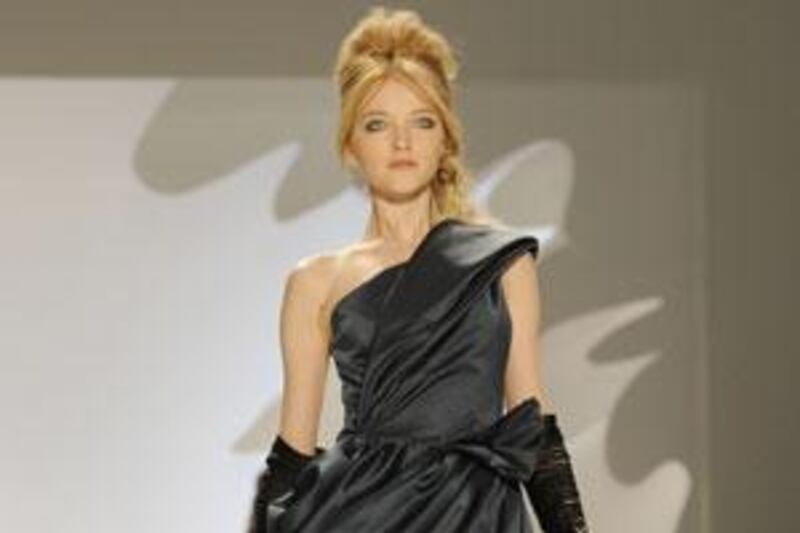If there is a prevailing fashion mantra that designers and attendees have been trumpeting this week, it is: pile it on. Layering one's clothes was even more appropriate with the cold temperature and wet snow falling on the already icy New York streets. Attendees clutched their heavy coats close, wrapped nubby scarves around their necks for warmth, and wore eye-catching gloves and wool caps. On the catwalks, too, there were many interpretations, though some were more minimal than others.
Vera Wang, always a poetic designer, refined the layers she's already known for in order to convey her romantic lyricism. There was a sequinned tulle top worn underneath a taffeta silk zip vest, a densely draped steel grey asymmetrical top and a black crumply long-sleeved tulle dress, the volume of which was tempered by a black belt. At Derek Lam, a western theme turned up as chic highlights throughout the collection. Chaps, suede panels on skirts and saddle-inspired fringe belts were toned down with handsome layering, while rigid yet feminine jackets (redolent of Barbour jackets in waxed cotton) smartened up a distressed denim shirt dress.
This exercise in restraint wasn't on the cards for Rodarte this season - or ever, for that matter. Laura and Kate Mulleavy, the sisters behind the label, always manage to challenge the conventional notions of beauty with an amalgam of unique ideas and disparate elements. But somehow, their complicated approach to design comes out compellingly beautiful rather than overwrought. For instance, in their Mexico-inspired collection, slightly billowy stockings were worn underneath a colourful printed skirt, a holey sweater underneath a thickly woven draped plaid top, and tops with numerous sheaths of fabrics as layers of puzzling construction.
In contrast to Rodarte's organic approach, Rad Hourani was all about severe lines rendered in black materials. The effect, though, was just as impactful when seen in the leather and wool coats with complex angular panels and asymmetrical closures. Although Matthew Ames can appreciate this attention to structure, the designer, whose work focuses on form, sent out a thought-provoking collection of wondrous shapes and silhouettes. Narciso Rodriguez, too, is in this architectural school of thought, but his role is rather more headmasterly. For his latest effort, rather than overwhelm, he harmonised three different colours in three different materials and sturdy metallics with drapey fabrics to winning effect.





